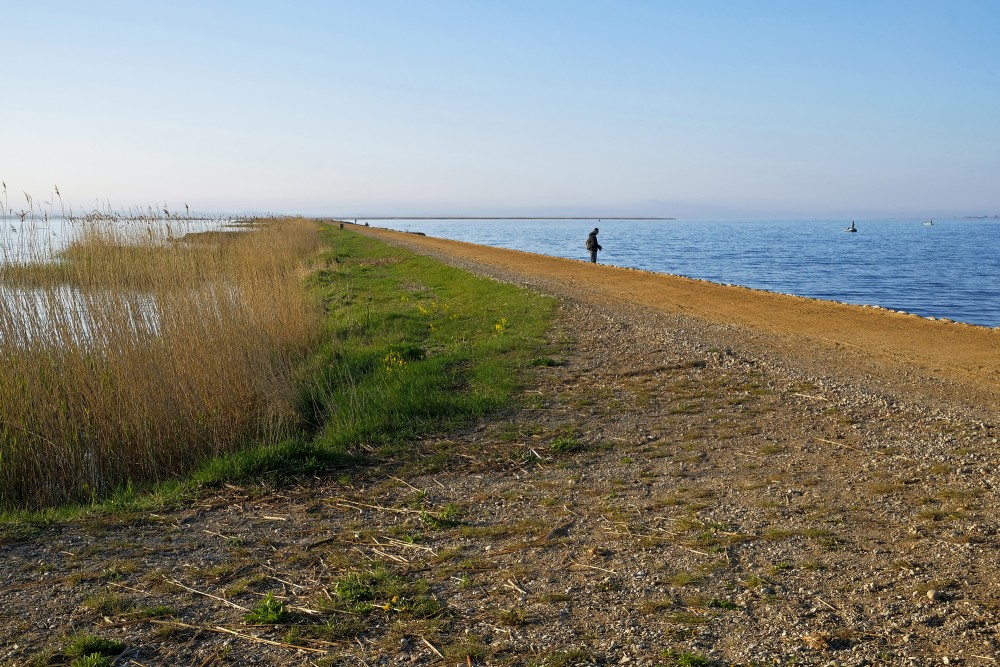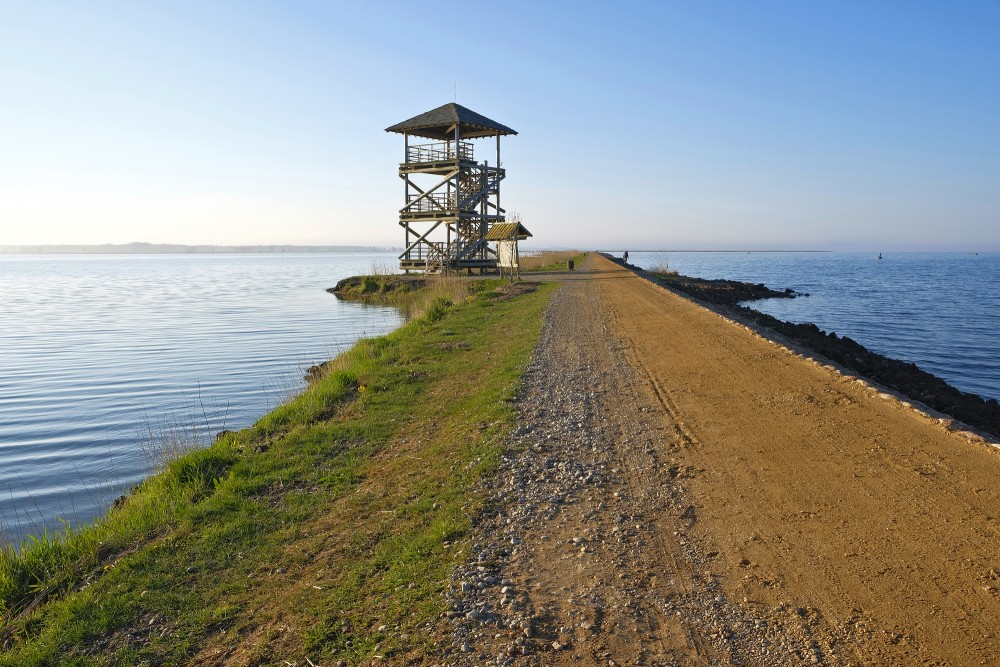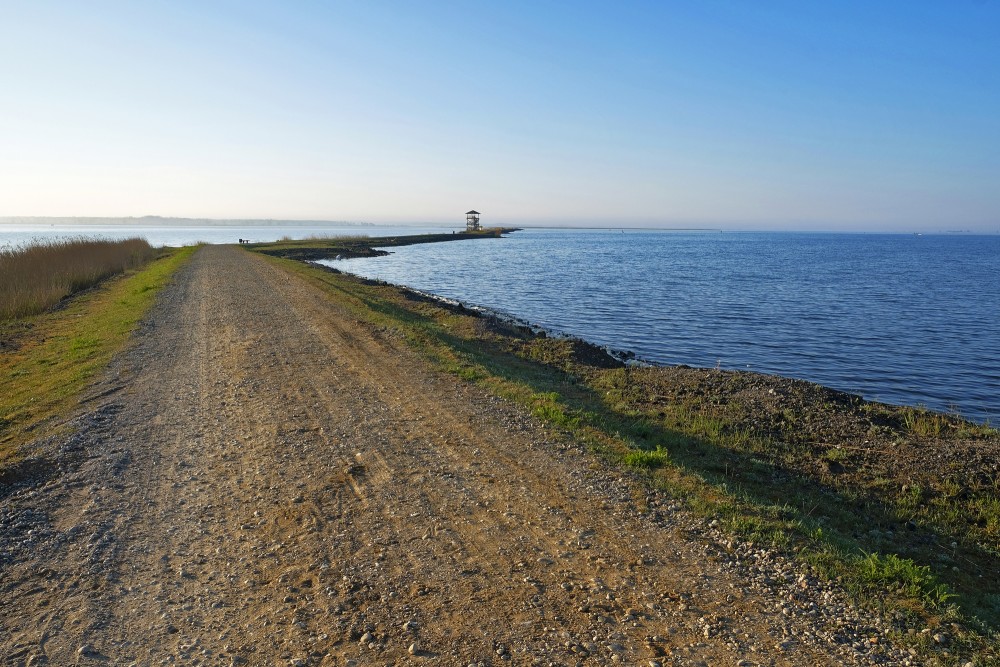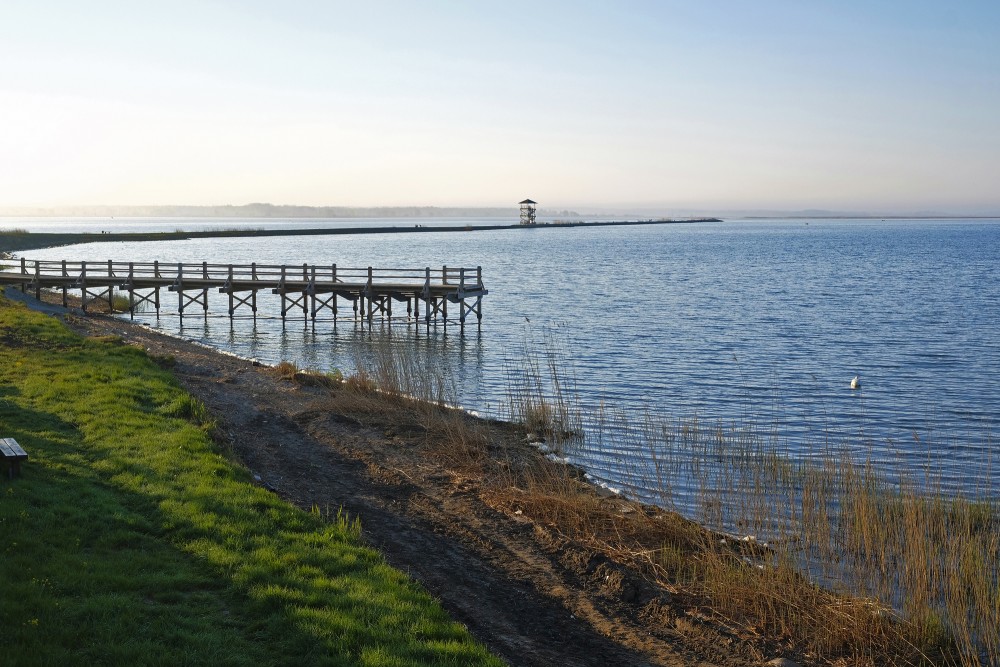Lake Liepāja
Lake Liepāja (Latvian: Liepājas ezers) is the fifth-largest lake in Latvia, located near Liepāja in the Liepāja District. The total area of the lake is 37.15 km2, and it has a length of 16.2 km, average depth of 2.0 m, and a shoreline of 44.6 km.
| Lake Liepāja | |
| Lake type | natural lake |
| Primary inflows | Bārta, Ālande, Otaņķe |
| Basin countries | Latvia |
| Max. length | 16.2 km (10.1 mi) |
| Surface area | 37.15 km2 (14.34 sq mi) |
| Average depth | 2.0 m (6.6 ft) |
| Max. depth | 3.0 m (9.8 ft) |
| Shore length | 44.6 km (27.7 mi) |
| Surface elevation | 0–2 m (0.0–6.6 ft) |
| Islands | 13 |
| Settlements | Liepāja |
Lake Liepāja is a pod-shaped shallow eutrophic coastal lake with extensive areas of emergent vegetation (Phragmites, Typha, Scirpus, Sparganium), surrounded by seasonally flooded meadows and arable land. Polders and dams enclose most of the wetland area. The lake has 14 species of fish: pike, roach, perch, bream, crucian carp, tench, eel, vimba, burbot, carp, zander, smelt, bitterling, and rudd. In May only licensed fishing is allowed. The price of a licence is 10 LVL (about $20). From 1977 to 1999 the lake was an ornithological preserve with 2 species of birds: swans and ducks. Since 2004 the lake has been included on the European Union Natura 2000 protected territories list. In 2008, a nature protection plan for Lake Liepāja was developed by the Grontmij Carl Bro company.
Islands
Lake Liepāja has 13 islands, the most notable of which are Atteku(-as), Zirgu, Pērkona, Putnu (kalva) and Cionas. On the east shore of the lake is the Friča grove, and on the west shore near Pērkone is the Reiņu Forest (Latvian: Reiņu mežs).
History
Historically, Lake Liepāja was connected with Lake Tosmare by Vernen Creek, but in the 20th century the creek was filled in. Later in the 20th century the Fortress Canal (Latvian: Cietokšņa kanāls, Melnupīte, Russian: Чёрная речка), which connects the lake to the Lake Tosmare and the sea, was dug. In the second half of the 20th century, the plant Liepājas Metalurgs built the Golodov Dam to separate the polluted part of the lake from the rest of the lake.
Rivers
The Ālande, Bārta, Otaņķe (Brūnupe), Līčupe, Orbupe, and Dorupe rivers flow into the lake.
en.wikipedia.org
Lake Liepāja is a lagoon created by the receding Baltic Sea. The lake and surrounding meadows are included in the nature reserve “Liepājas Ezers” and is a “Natura 2000” protected area of European significance because of nesting and migratory birds that can be found there. Included in the list of protected bird species are 27 nesting bird species, 10 winter bird species and 50 bird species that feed here during migration.
Lake Liepāja is also a popular fishing and recreation spot. The Trade Canal links it to the sea with boat and paddleboat rentals available. There are two birdwatching towers by the lake – one is at the end of Lauku Street and the other is on the dam created on Zirgu Island.
There is an almost 1 km long boardwalk at the end of Lauku Street that leads to a birdwatching tower in the Lake with a 10-metre high viewing platform to enjoy the surrounding scenery. A bicycle stand is located at the beginning of the boardwalk, right next to the parking lot.
The birdwatching tower on Zirgu Island can be reached by a kilometre-long gravel footpath. The dam on which the birdwatching tower is built reaches almost to the middle of the lake. Zirgu Island Nature Trail has some boardwalk paths, two viewing platforms on the lake, picnic spots as well as outdoor gym equipment. A spacious parking lot is located tht he beginning of the Zirgu Island Nature Trail.
During the summer, live music concerts “Liepāja Lake Music” take place on a floating stage in the lake.
liepaja.travel












